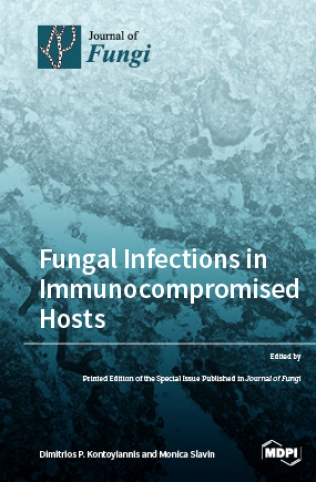Comparative Genomic Analyses of Colletotrichum lindemuthianum Pathotypes with Different Virulence Levels and Lifestyles
IF 4.2
2区 生物学
Q2 MICROBIOLOGY
引用次数: 0
Abstract
Colletotrichum lindemuthianum is the most frequent pathogenic fungus of the common bean Phaseolus vulgaris. This filamentous fungus employs a hemibiotrophic nutrition/infection strategy, which is characteristic of many Colletotrichum species. Due to host–pathogen coevolution, C. lindemuthianum includes pathotypes with a diversity of virulence against differential common bean varieties. In this study, we performed comparative genomic analyses on three pathotypes with different virulence levels and a non-pathogenic pathotype, isolated from different geographical areas in Mexico. Our results revealed large genomes with high transposable element contents that have undergone expansions, generating intraspecific diversity. All the pathotypes exhibited a similar number of clusters of orthologous genes (COGs) and Gene Ontology (GO) terms. TFomes contain families that are typical in fungal genomes; however, they show different contents between pathotypes, mainly in transcription factors with the fungal-specific TF and Zn2Cys6 domains. Peptidase families mainly contain abundant serine peptidases, metallopeptidases, and cysteine peptidases. In the secretomes, the number of genes differed between the pathotypes, with a high percentage of candidate effectors. Both the virulence gene and CAZyme gene content for each pathotype was abundant and diverse, and the latter was enriched in hemicellulolytic enzymes. We provide new insights into the nature of intraspecific diversity among C. lindemuthianum pathotypes and the origin of their ability to rapidly adapt to genetic changes in its host and environmental conditions.具有不同毒力水平和生活方式的 Colletotrichum lindemuthianum 病型的基因组比较分析
Colletotrichum lindemuthianum 是普通豆科植物 Phaseolus vulgaris 最常见的致病真菌。这种丝状真菌采用半生物营养/感染策略,这是许多 Colletotrichum 种类的特征。由于宿主与病原菌的共同进化,C. lindemuthianum 对不同的普通豆品种具有不同的毒力。在这项研究中,我们对从墨西哥不同地区分离出来的三种毒力不同的病原型和一种非致病性病原型进行了基因组比较分析。我们的研究结果表明,这些病原型的基因组较大,转座元件含量高,而且经历了扩增,从而产生了种内多样性。所有病原型都表现出相似数量的同源基因簇(COG)和基因本体(GO)术语。转录因子基因组(TFomes)包含真菌基因组中的典型家族,但不同病原型的家族内容不同,主要是具有真菌特异性 TF 和 Zn2Cys6 结构域的转录因子。肽酶家族主要包含丰富的丝氨酸肽酶、金属肽酶和半胱氨酸肽酶。在分泌组中,不同病型的基因数量不同,候选效应物的比例较高。每种病原体的毒力基因和CAZyme基因含量丰富且多样,后者富含半纤维素分解酶。我们对 C. lindemuthianum 病原体种内多样性的性质及其快速适应宿主和环境条件遗传变化的能力的起源有了新的认识。
本文章由计算机程序翻译,如有差异,请以英文原文为准。
求助全文
约1分钟内获得全文
求助全文
来源期刊

Journal of Fungi
Medicine-Microbiology (medical)
CiteScore
6.70
自引率
14.90%
发文量
1151
审稿时长
11 weeks
期刊介绍:
Journal of Fungi (ISSN 2309-608X) is an international, peer-reviewed scientific open access journal that provides an advanced forum for studies related to pathogenic fungi, fungal biology, and all other aspects of fungal research. The journal publishes reviews, regular research papers, and communications in quarterly issues. Our aim is to encourage scientists to publish their experimental and theoretical results in as much detail as possible. Therefore, there is no restriction on paper length. Full experimental details must be provided so that the results can be reproduced.
 求助内容:
求助内容: 应助结果提醒方式:
应助结果提醒方式:


